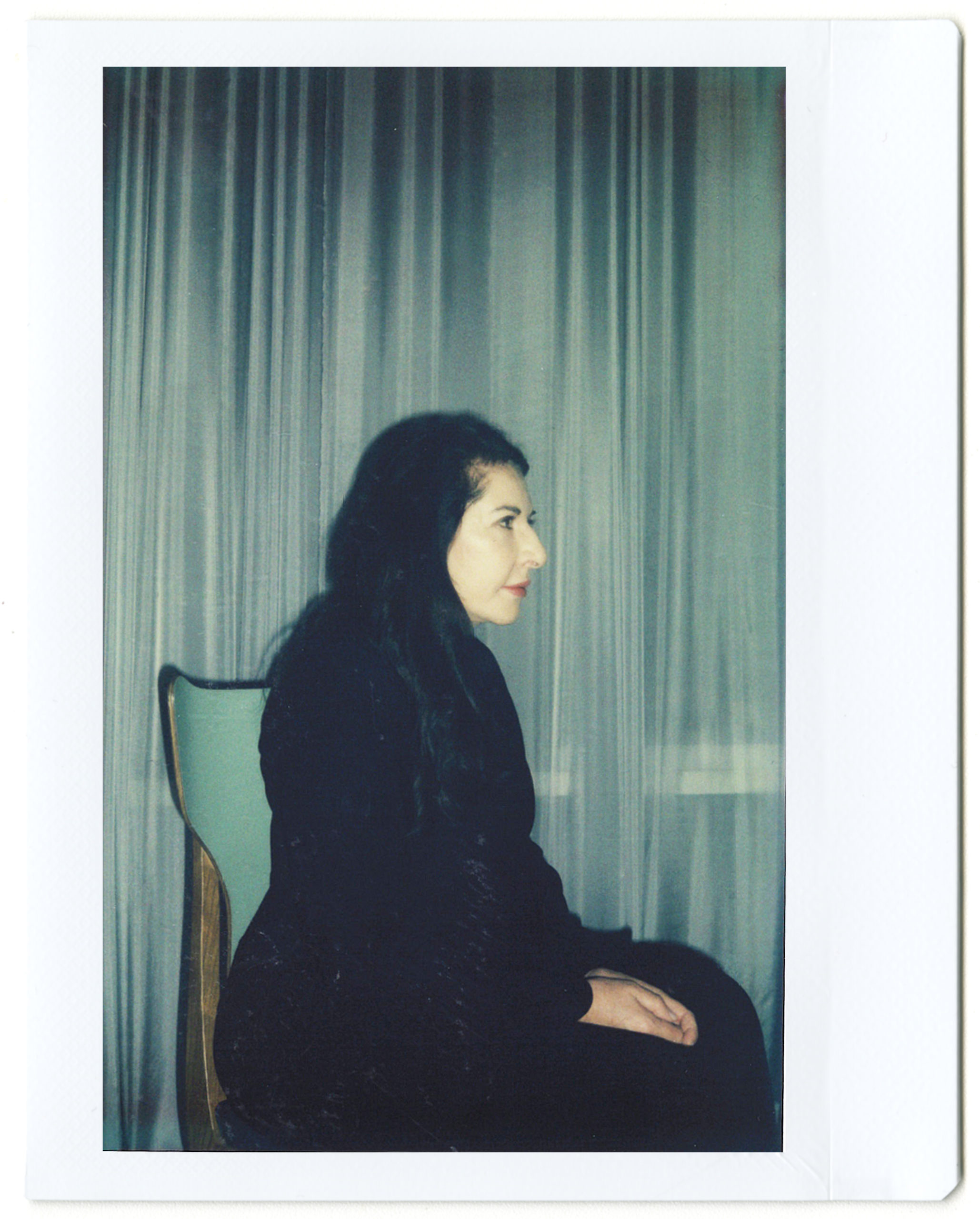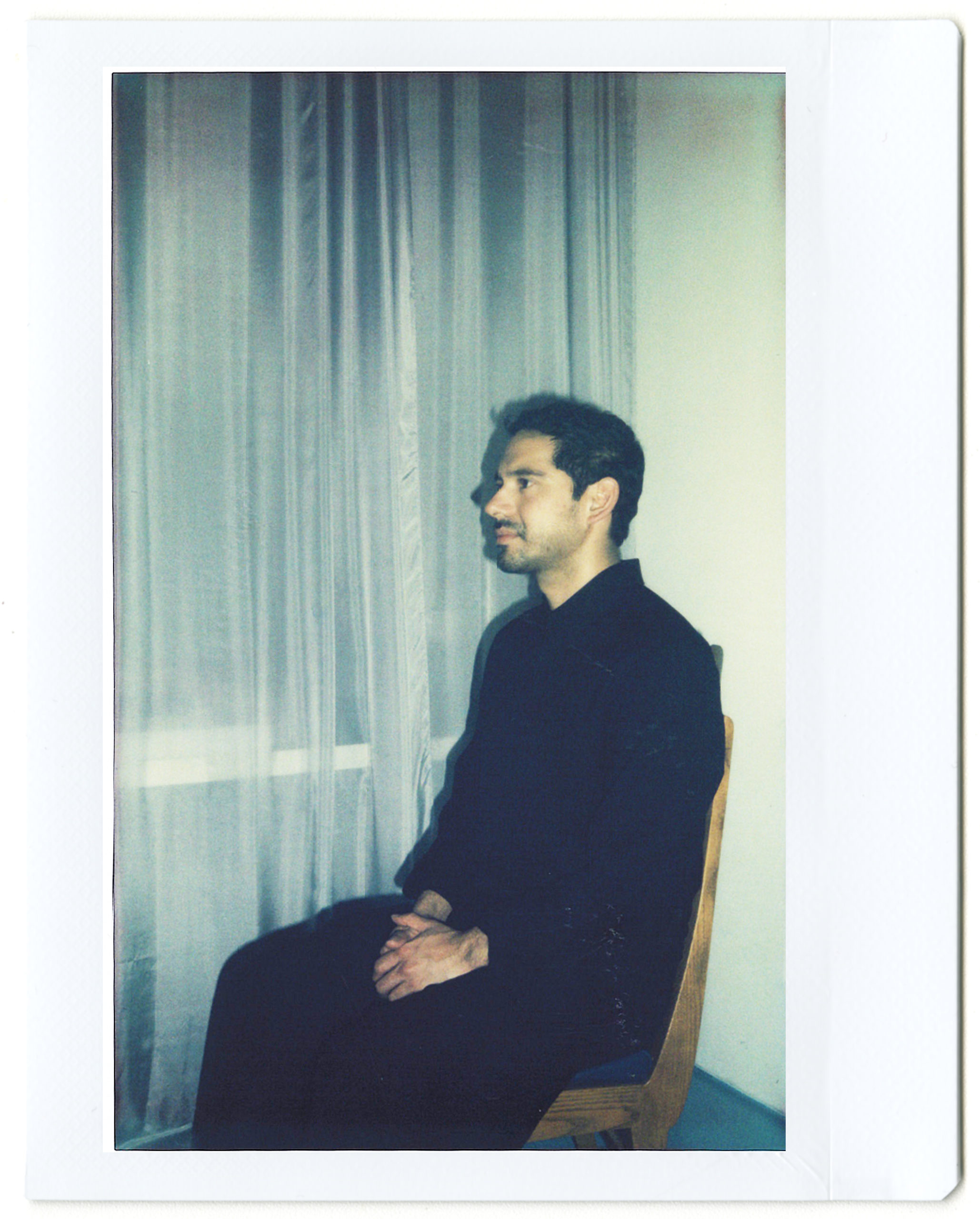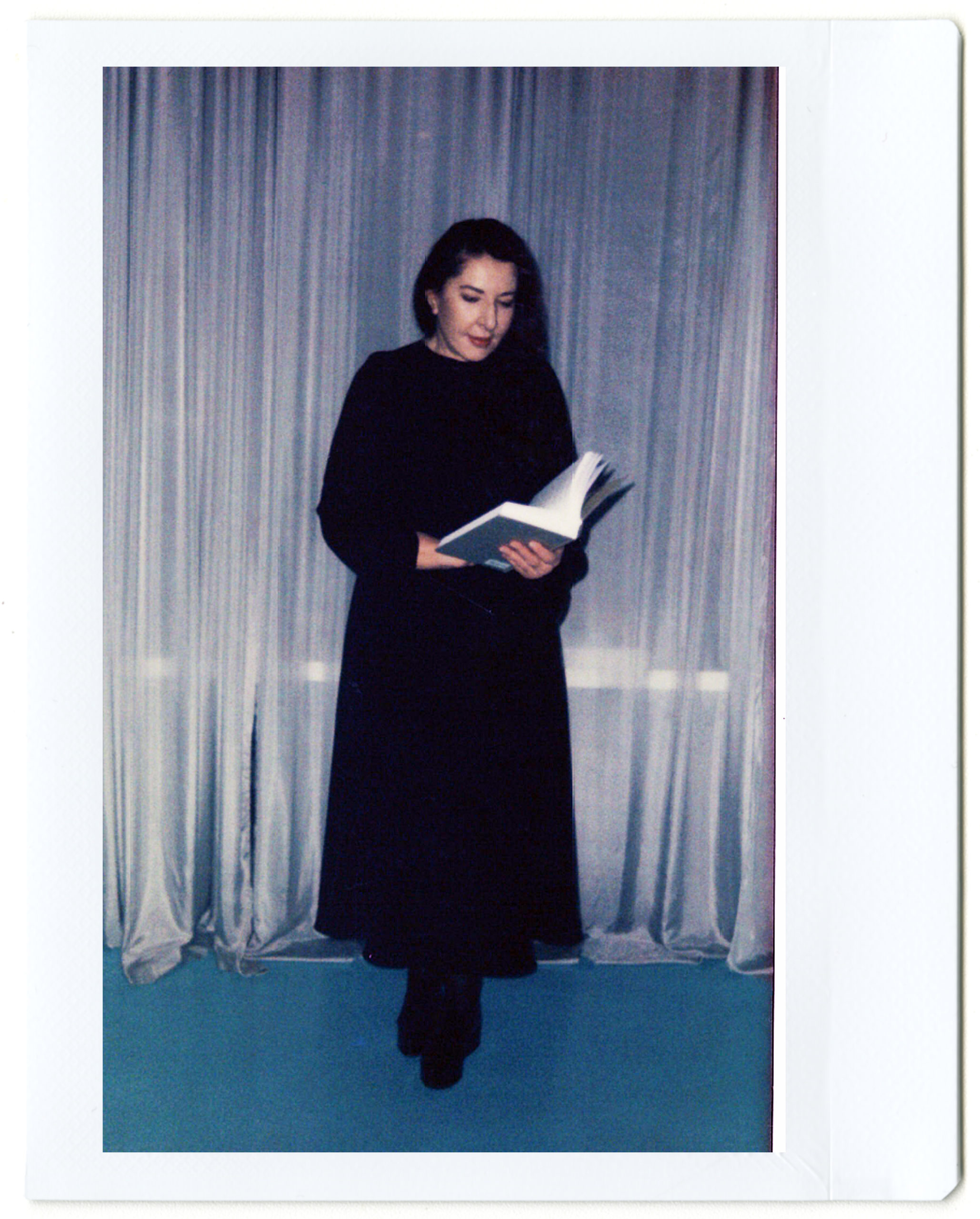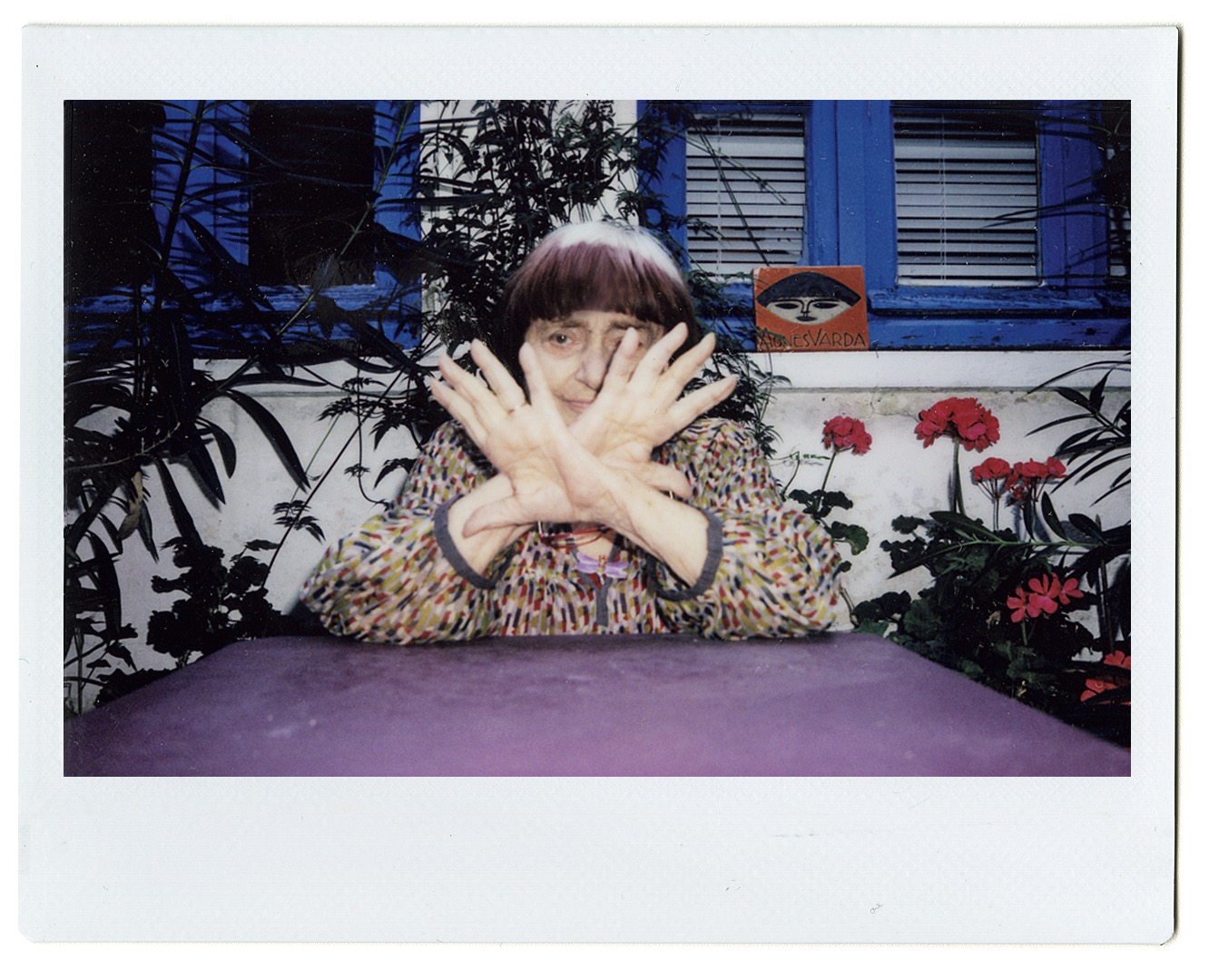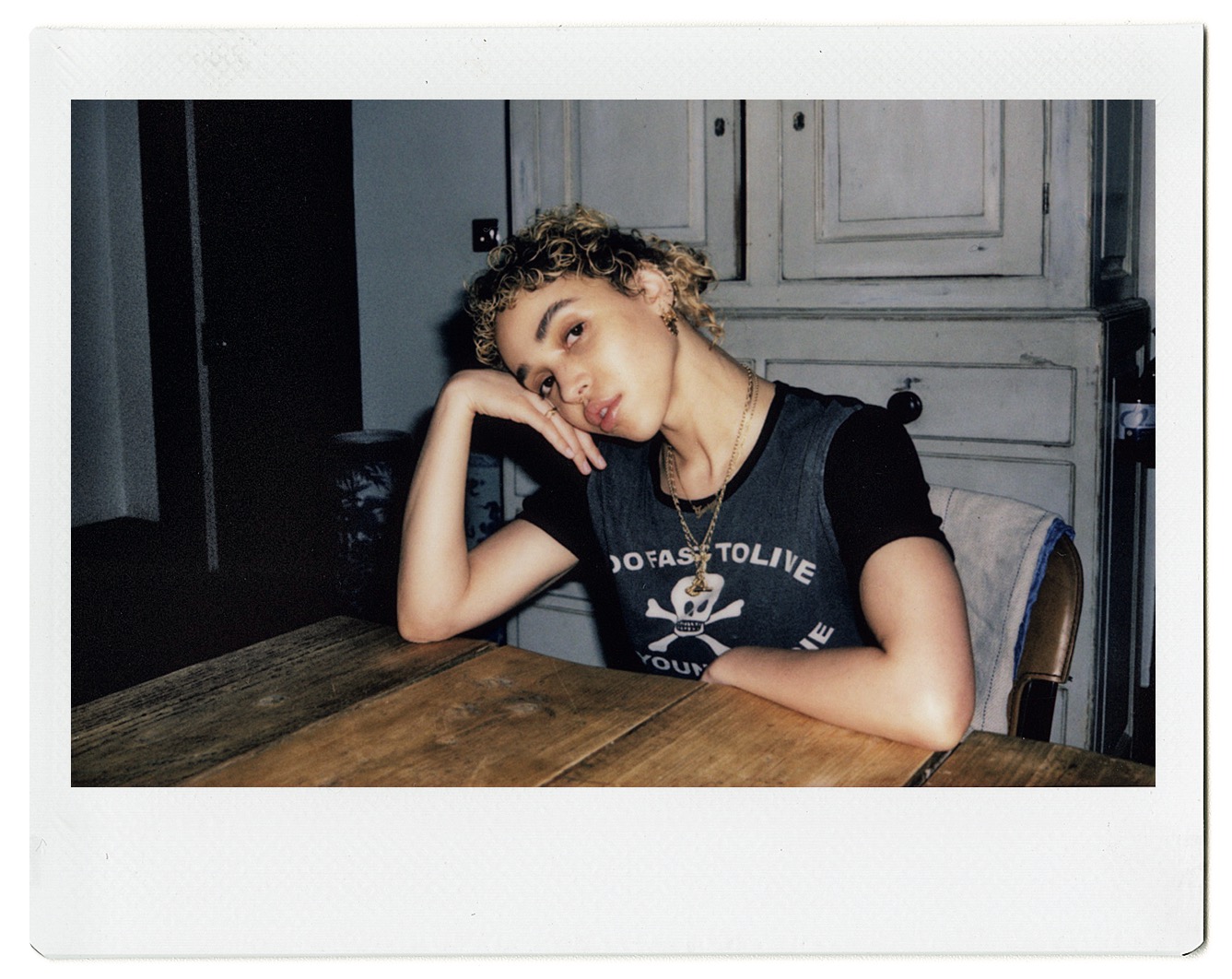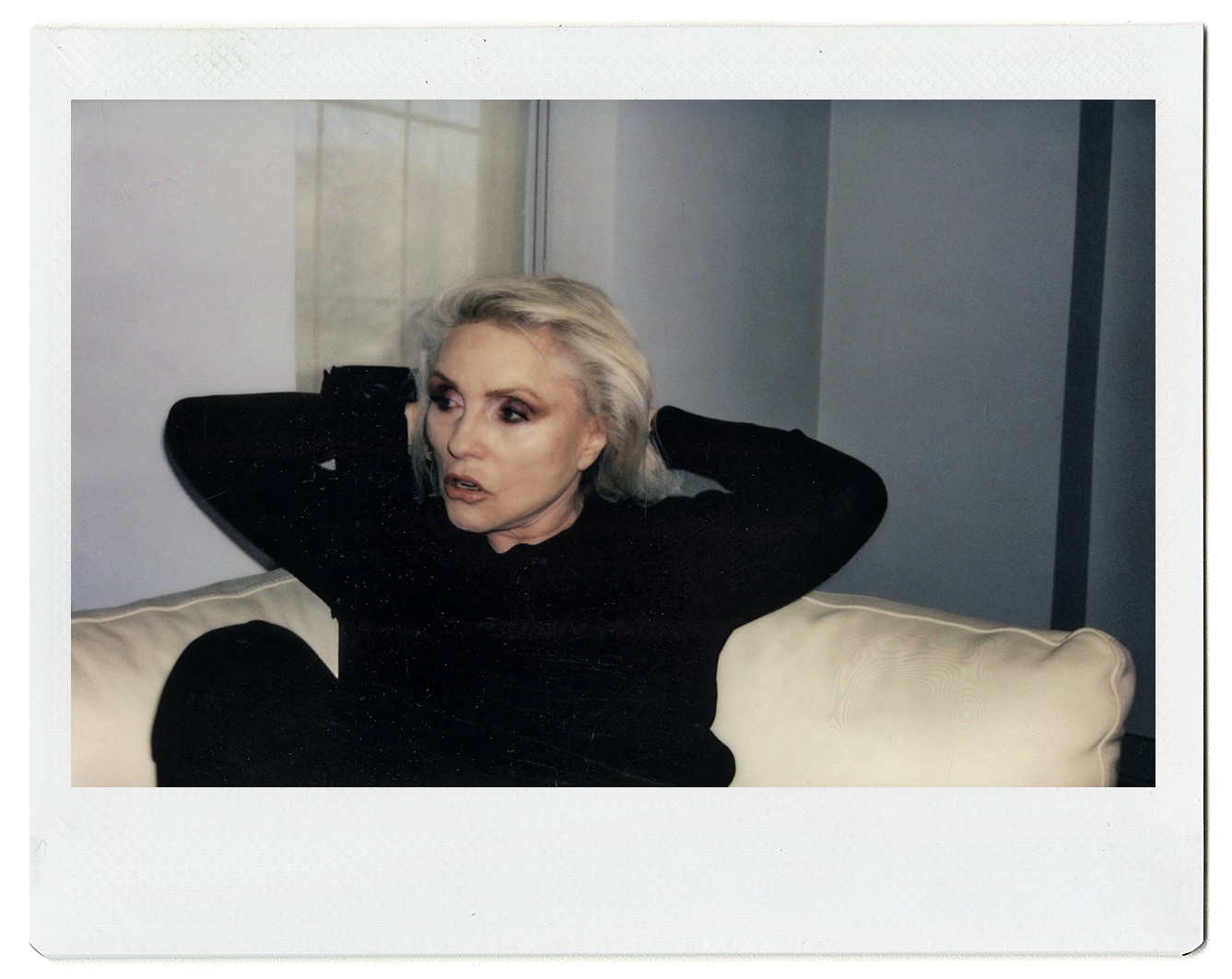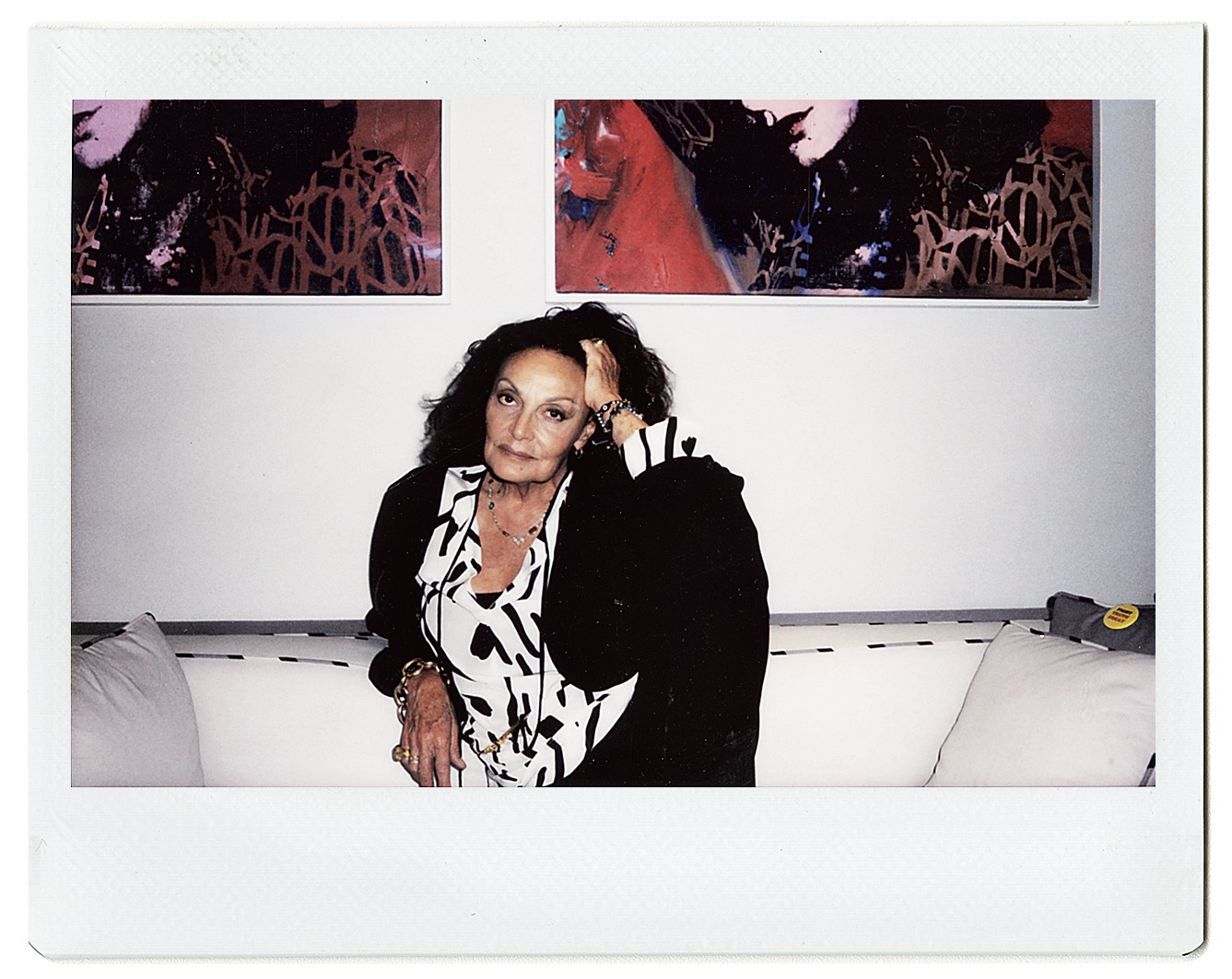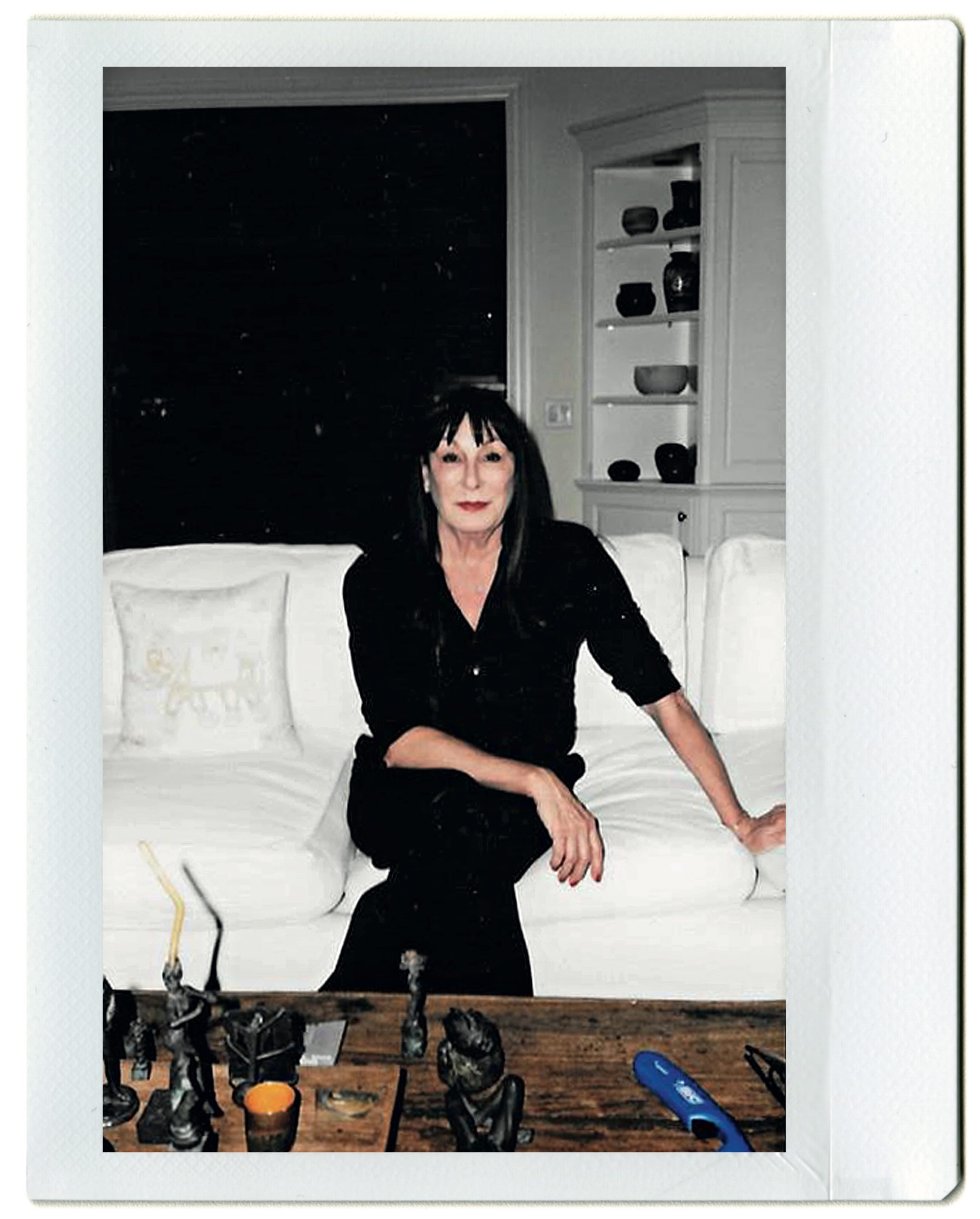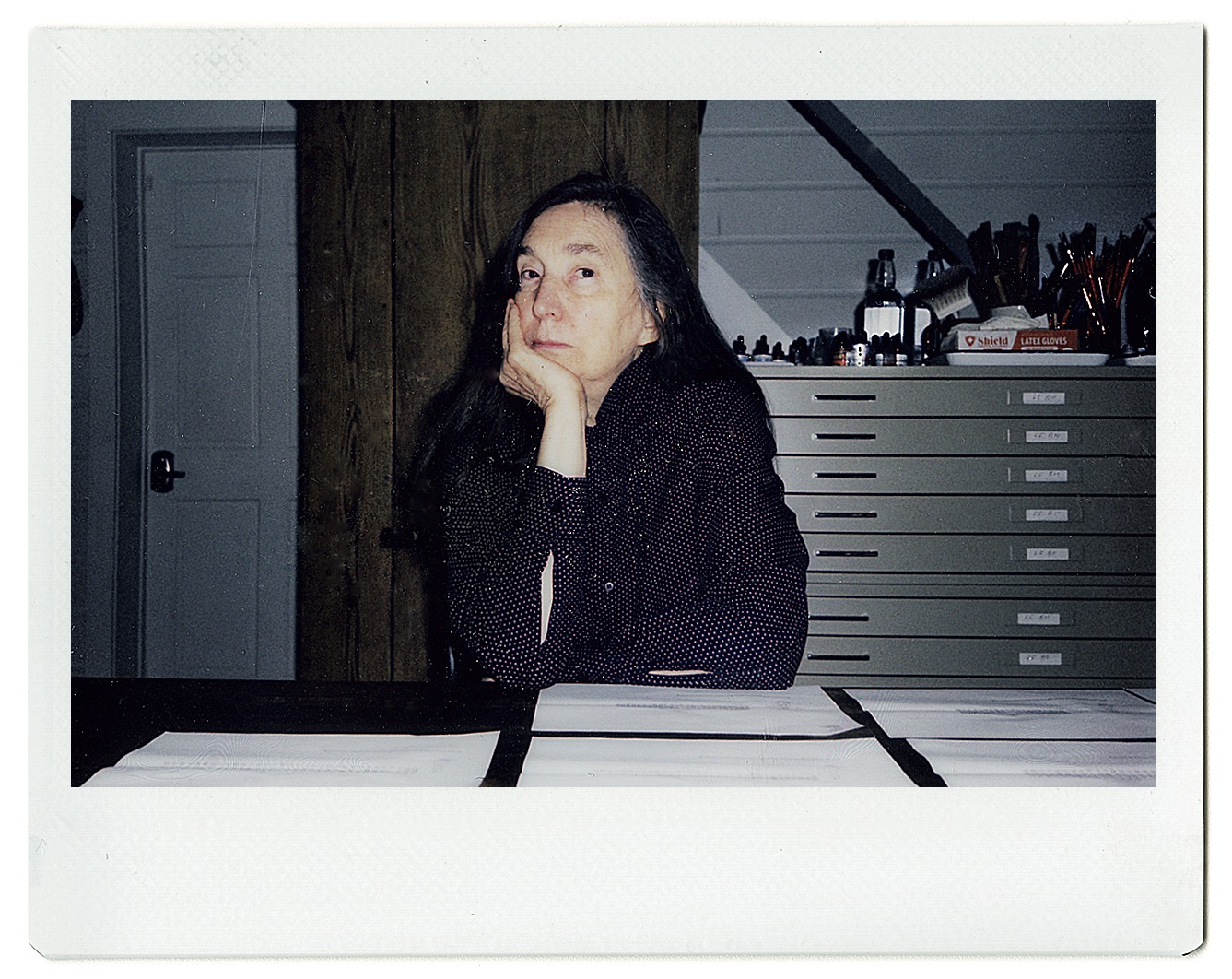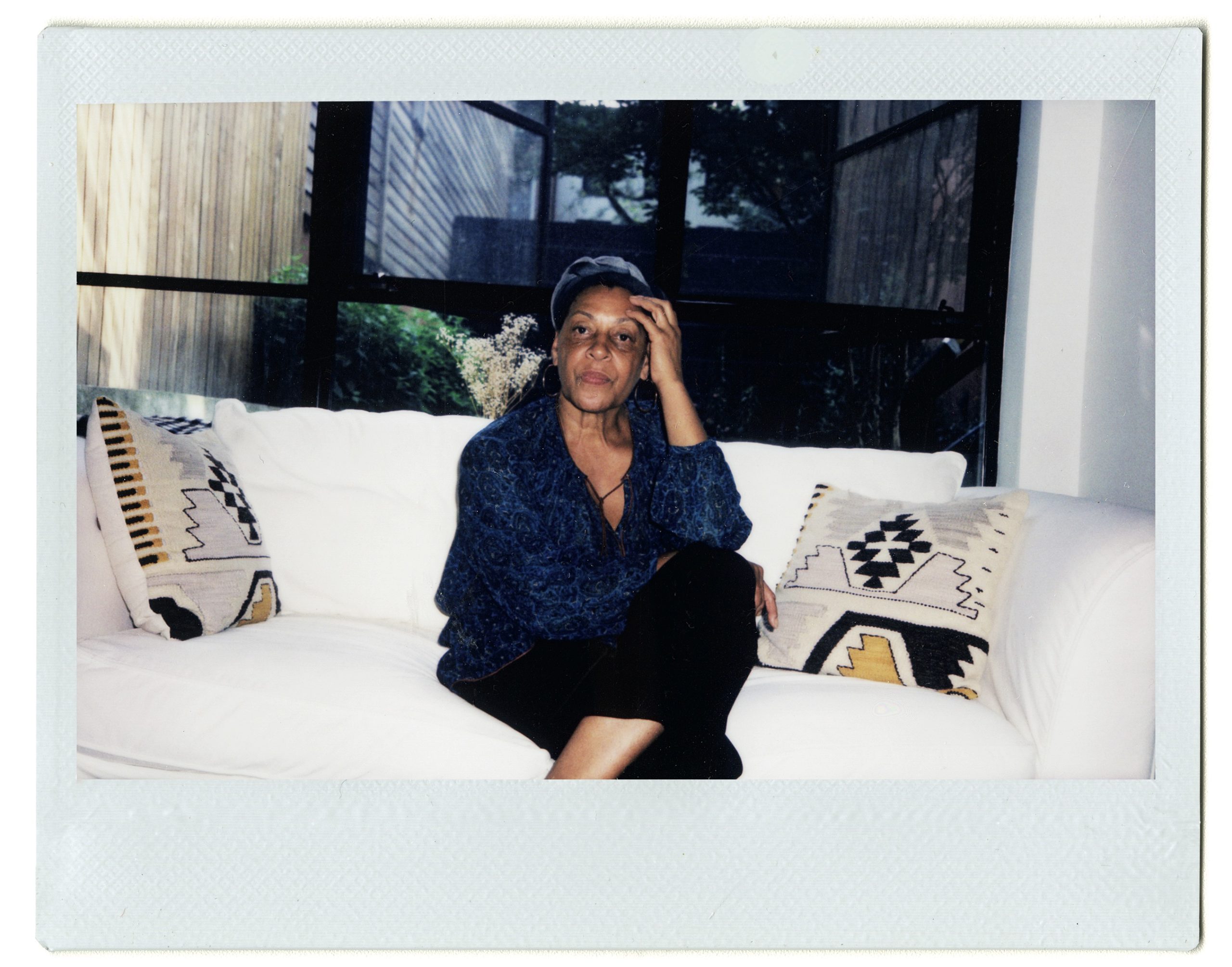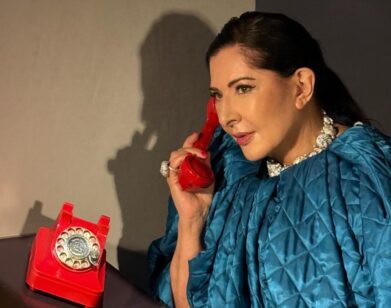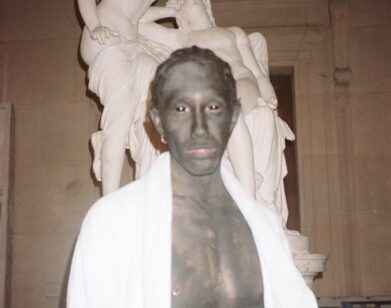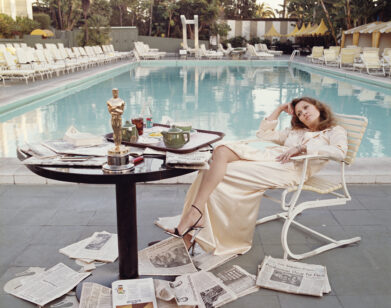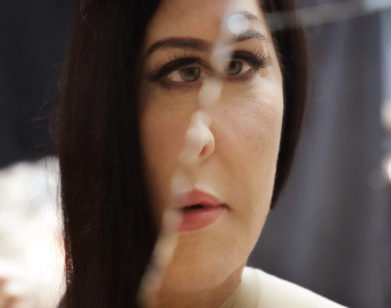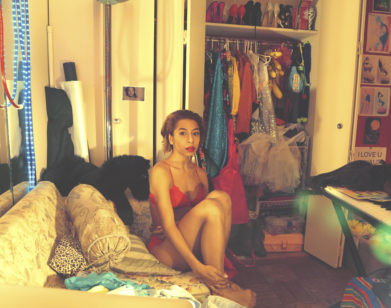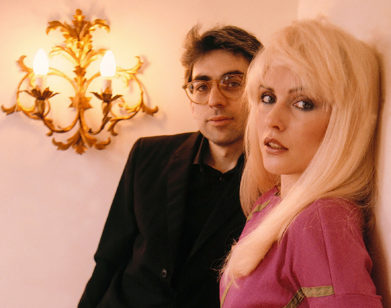face to face
Marina Abramović and Hugo Huerta Marin Come Face to Face
- © Hugo Huerta Marin and Marina Abramović.
- Hugo Huerta Marin wears The Row.
In the wise words of our very own Andy Warhol, “the idea is not to live forever, it is to create something that will.” This sentiment is an apt summary of Portrait of an Artist: Conversations with Trailblazing Creative Women, the latest book by Hugo Huerta Marin. The New York City-based artist, whose practice is dedicated to excavating the constructs of gender and cultural identity in an increasingly global society, turns his eye in Portrait of an Artist toward the legacies of 25 women. Through a compilation of pictures and interviews with the likes of Miuccia Prada, Agnes Barda, FKA Twigs, Juliane Moore, Yoko Ono, and Jenny Holzer (to name a few), Huerta Marin explores the inner workings of creative minds that have transformed culture. Late last month, Huerta Marin sat down with Marina Abramović, also featured in the book, for an intimate conversation about legacy, the myth of success, and tapping into creativity at the Portrait of an Artist launch event at Fotografiska New York. If you missed the event, don’t fear. Below, take a look at the pair’s conversation, exclusive to Interview, along with some Polaroids taken by Huerta Marin moments before the event began.
———
HUGO HUERTA MARIN: First of all, I really want to thank everyone for being here. I feel very honored. You’re here with me to celebrate the book that I worked on for seven years, and it’s finally coming out to the light. I’m even more honored to have this conversation today with one of my favorite artists, but also one of my favorite humans, Marina. I wanted to start this conversation light, with this quote that Marina sent to me some months ago. We were working on the book, and she said, “We should use this quote for this book.” She didn’t say anything else. I’m going to read this quote for you — it’s from Gandhi. It says, “First, they ignore you. Then they laugh at you. Then they fight you. Then you win.” What does this quote mean to you, Marina?
MARINA ABRAMOVIC: When I read this quote, it was like somebody was talking to me. “They ignore you,” is like the synthesis of my own life. When I started doing my performance work in ex-Yugoslavia in the early 1970s, it was so difficult. It was like being the first woman walking the moon. Not only do they ignore you, but also they think you’re not an artist. That you should be put in a mental hospital. This is ridiculous, this is total bullshit. The criticism was so bad that if I really took them seriously, I would never leave my room. It was so difficult.
Then, they start fighting you because you start actually having status and [your] performance starts becoming important. Then you start winning. This happened after 50 years of my career. It was a long time.
HUERTA MARIN: It’s not easy, and actually I relate to it, because when I started this project, I told some friends, “I want to interview Yoko Ono, or Marina.” everybody laughed at me, like, “You’re crazy and good luck with that.” Then it happens. This took me 7 years, not 50 years. For someone that has such an extraordinary career, like you, what kind of recognition do you value the most nowadays?
ABRAMOVIC: Honestly, being humble, because I think it’s dangerous for an artist to become a god, and [have an] ego higher than the Himalayas. Woody Allen once said, “Today, I’m a star; tomorrow, I’m a black hole.” It’s a good perspective. You have to really understand to be humble, it’s not you who’s important. It’s the work. It’s the message. It’s the content.
HUERTA MARIN: But, for example, many journalists ask me, “How is it to interview these idols, or these icons?” I don’t like the concept of the icon or the idol. How do you relate to this concept?
ABRAMOVIC: I can only talk about my own personal perspective. First of all, as a performance artist, and doing the work of art for so many years, I was nowhere [near being] any kind of icon. But something changed really radically and it was traumatic for me. It was a museum show in MoMA, with artists present. From one day to another day, I got 850,000 visitors and people sleeping on the street to come to the museum. Americans are very strange people. They like to discover you because you come from nowhere. I come from ex-Yugoslavia. In those times, it was like the fifth world. Here, they like to discover you because you’re doing things that nobody else is doing. And then they worship you. And then they start actually blaming you for becoming an icon. But I didn’t put myself in this place to start with. I’m the same as always. It’s a very, very, very uncomfortable position. If I think, ” If I’m going to die tomorrow, what am I leaving behind me?” I really think that one important thing is that I am one of the people responsible for making performance art into mainstream art. But I’m not ready to die.
HUERTA MARIN: I have muses in my life. My mother was my first Muse when I was very little. Do you have a Muse?
ABRAMOVIC: I don’t think I have any Muse. People asked me, “Who were the artists who inspired this?” And I don’t like to be inspired by other artists because all of us artists are always inspired by somebody or something. That means when you inspire another artist, it is a second-hand inspiration. Let’s go to the source. For me, it definitely is nature. Nature is magic. Waterfalls, volcanoes, running water, the tops of the mountains, trees. And [also] the old cultures. Anything to do with shamanism, the aborigines of Australia, the Indians, Tibetan monks, they have so much wisdom to learn from. I always believed that in my position as an artist, I’m the bridge between the Western and Eastern world.
But in my life, I have very few true friends that are very important to me. One person who was very important to me was John Cage. I loved John Cage so much. He had this incredible house in west Manhattan, full of cactuses. He would be in the kitchen making macrobiotic food. Those times in the kitchen with him were so important to me. I would go there and cut the garlic for him, and he would tell me wisdom and talk about me. And he really was the most humble person that I ever met.
HUERTA MARIN: Excuse me, you just made an opera based on Maria Callas. Isn’t she your Muse?
ABRAMOVIC: Somebody told me, “To do opera as a conceptual artist and very radical performance artist, you’re totally crazy.” Opera is such a dinosaur-ish art form. Who is making opera these days? But, I never give up. It took me eight years to get permission from the Chinese government to walk the Great Wall of China. Doing the Seven Easy Pieces at the Guggenheim Museum? It took me 12 years to get permission for anything else afterwards. And this piece? 32 years. When I was 14 years old, I was sitting in a kitchen with my grandmother, which is actually the most important kitchen in my childhood. That’s where everything happened. I was having breakfast and we had an old Bakelite radio. There comes the sound of this voice, and I remember standing up in the middle of the kitchen and starting crying. It was incredibly emotional, my relationship to that voice. And then later on, the speaker on the radio said, “This was Maria Callas.” This kind of relation to her never left me. I always wanted to deconstruct opera in a different way and create something new. I understood that in every opera, women die for love. So in Seven Deaths of Maria Callas, I chose seven operas and I only showed the dying. There’s no story, only the dying, one after another. Strangulation, burning in fire, radiation, heart attack, knifing, madness.
HUERTA MARIN: And would you say this project is a self-portrait?
ABRAMOVIC: When I start working on a performance, I have to start from the body. It becomes my main subject and object of my work. Body becomes the main center, and I only know one body, my own body. So, in the body’s universe, scientists think that we use 30% of the brain, maybe only 20%. I took my body as the center of that world. Not because I want to make a self-portrait, but because the subject is an experiment, I can push my body physically, mentally to different limits, which I don’t expect anybody else to do. I am responsible for my own decisions.
HUERTA MARIN: You’ve been going against the grain for a long time, and being really daring when it comes to performance and your work. I think many people are really afraid of what happens if you go further. So, for you, how far is too far?
ABRAMOVIC: In performance, it’s all about energy, and energy’s invisible. You have to feel energy. People in the room have to feel that energy. What is important is how much of yourself you give to the public. If you’re stingy and you give 30%, you get 30% back. It’s mathematical. If you give 100%, you get 100%. But if you give 150%, my dear, now we are talking here. Because that 50% more, it creates something else. You are actually giving energy from every molecule of your being. And nothing is left in you. The public feels that, and can communicate with that kind of energy. This is so important because you have to be open and vulnerable and accessible. That’s the only way.
HUERTA MARIN: Sometimes pain is involved. Physical pain, mental pain.
ABRAMOVIC: Who cares? You know, this is the whole thing that everybody’s always talking about. “Oh, my god, it’s painful; oh, my god, it’s uncomfortable. Oh, my god…” People are afraid of pain, afraid of suffering, and of mortality. And these three basic subjects are what all of art is busy with. To me, the pain is so interesting because if you open the door of the pain, you go to the other side and the pain doesn’t exist. But it’s too easy to tell you. You have to experience it. It’s incredible what can happen. You actually have to be not to be afraid, to have courage. To go somewhere where you have never been. It’s so easy to do things you like. Do something that you have never done before, and then see what happens.
HUERTA MARIN: Do you think the mindset of an artist changes with success or fame or money?
ABRAMOVIC: Of course. That’s a huge danger. This acceptance, it’s so uncreative. The worst part is when the artist becomes a commodity and starts selling and repeating the same work and they’re producing the same thing because the public likes it. To be full of curiosity is the key to everything. This is one of the reasons I want to do opera. I mean, why should I risk so much to do an opera that I have never done and I can have rotten potatoes and eggs thrown at me because people are incredibly critical? I don’t care.
HUERTA MARIN: And what is next for you?
ABRAMOVIC: God, what is next for me… I think I’m finished with dying, because I made the big theater piece The Life and Death of Marina Abramovic, and now Seven Deaths of Maria Callas. I think I’m going to focus on living right now. What is next for you?
HUERTA MARIN: Well, after I finished this book, I was like, “I will never do an interview again. I’m done with interviews and taking pictures.” But a very big question popped up. It included a trans woman and a trans woman of color in this book, and I realized it was a completely different topic. It’s a very important thing as a gay, brown Mexican artist to have inclusion. So making another book about LGBTQ+ artists that shifted the culture is what’s next.

